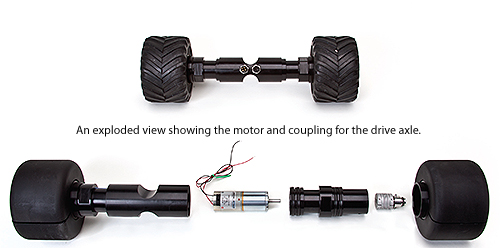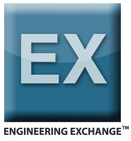There has been a rising tide of underwater applications for ROVs (remote operated vehicles) over the past few years, especially with intensified focus on maritime security and a mandated need to satisfy increasingly strict enforcement regulations. Below the water line ROVs have been repeatedly enlisted at ports and harbors to find and identify unknown foreign objects (from contraband to explosives) that may have been clandestinely attached to the hull of a ship.

The Little Benthic Crawler (LBC) was born several years ago and debuted during a U.S. Navy-sponsored Hulsfest, which was convened to offer companies an opportunity to demonstrate state-of-the-art equipment for identifying IEDs on ship hulls. Since then, SeaBotix ramped up LBC production and its systems have been deployed for service around the globe. Photography: Jim Hellemn
One of the most innovative ROVs operating under the seas today is the Little Benthic Crawler (LBC™) ROV from Seabotix. The LBC features a dual vertical thruster configuration for precise rolling movement in water and stabilization at depths down to 30 m (100 ft.). Switching to attachment mode, an operator simply pilots the LBC toward the ship’s hull and positions either the port or starboard wheel set close to the hull. Using the lateral function on the system’s joystick, the operators initiate the LBC into a roll. Once the angle of the LBC matches the angle of the ship’s hull, the operator activates the vortex generator, which attracts the LBC to the hull.
When the LBC attaches to a surface, it can be “driven” instead of “flown.” The operator switches controls from ROV mode to “crawler” mode. Engaging the same controls used to fly the LBC through the water, the operator can drive the LBC with the motor-driven wheels. With the system affixed to the hull, the crawler serves as a tripod to stabilize the sensors in relation to the hull with no relative motion.
The drive mechanism was engineered to promote traction, straight-line tracking during inspections, and the highest possible torque for maximum operating capability. The LBC drivetrain integrates Pittman® brush-commutated dc motors and planetary gearheads from AMETEK Technical & Industrial Products, Inc., with one gearmotor for each of the four wheels.

Photography: Jim Hellemn
Heart of the vehicle
The trademarked SeaBotix LBV300-5 system (which is then outfitted with the patented crawler skid to create the LBC) can best be described as the “heart” of the vehicle. An integrated control system (located on the surface) consists of a rugged, protective case fitted with weatherproof monitor, surface power supply, and removable operator control unit. The LBV300-5 system, which is depth-rated to 300 m (1,000 ft), enables 4-axis maneuverability and delivers crystal-clear fiber optic video transmission (range of view 270º) with embedded transmitter, high-resolution color video camera, and high brightness white LEDs. The LBV additionally can support high-resolution sonar and a vast array of other sensors.
One of the more intriguing technologies carried by the system is the Vortex VRAM featuring a patented design. The VRAM produces the vortex effect creating 23 kg of attraction and can adhere strongly to any hard surfaces being inspected in currents as strong as 5 knots. This technology compares favorably with larger, less efficient ducted props or magnetic attractors. With magnetic attractors, for example, application potential would be inherently limited, because an extremely smooth and ferrous metal surface is a must for magnetic attractors to do the job. And, for military applications, magnetic attractors would be ruled out, because they would leave a residual and potentially detected magnetic pattern on a ship’s hull. The SeaBotix VRAM represents the more practical technology, driving successfully on any hard and relatively flat surface.

Gearmotors by design
Key to the LBC’s performance is the drivetrain. Four primary criteria (speed, pull force, size, and weight) helped guide motor selection and specifications. The goal was to make the LBC capable of travel at a relatively fast pace and deliver sufficient pull force for the tether while minimizing the size and weight of the motors in the overall assembly.
By developing 360 oz-in. of torque at 40 rpm, the Pittman gearmotors can drive the LBC at speeds up to 30 m/min (100 ft/min), which allows for underwater inspections to be performed quickly, especially important in situations where time may be critical. The 25 kg pull force easily handles the tether cable, ensures that wheels do not stall if drag conditions develop, and assists in overcoming strong water currents. The specified gear ratio is 84:1 and is consistent with the LBC’s speed/torque requirements.
A relatively small design envelope for the motors meant that size certainly mattered. Motor size was dictated by the layout of the axle, which houses the motors and drive electronics. So despite a tight fit, engineers were able to ensure adequate thermal management for the motors and motor controllers. The unit is cooled through conduction through the housing to the seawater. The resulting package is both compact and efficient. A specially engineered aluminum cylindrical housing performs multiple functions by supporting the wheels, serving as the axle, and snugly incorporating the motors (each approximately 5-in. long) and electronics.
Motor weight was an important consideration as well because any weight added to the vehicle would translate into a need for additional floatation to compensate and maintain buoyancy. Each of the gearmotors weighs about 2 lb. The weight and balance calculations were made to confirm that there would be neutral buoyancy and that the vehicle would be stable while maneuvering.
Even the wheels of the LBC are designed as buoyant elements. They integrate a light aluminum hub in the center of each wheel and are surrounded by a light polyurethane foam wheel. The tire is actually more like a rubber band stretched over the polyurethane wheel to provide a durable, high-friction surface.
The drivetrain design for the LBC involved a fair amount of customization. Examples of motor customization include a specially designed output shaft and front mounting configuration and the integration of optical encoders.

A bottom view of the ROV showing the Pittman brushed dc motors and the planetary gearheads. The LBC offers a powerful size/weight ratio (21 in. x 19.7 in. x 15.7 in.) and the entire assembly weighs 61.7 lb.
The motor’s output shaft was specified, in part, to fit a flexible coupling, which joins the shaft with a special shaft adapter to mitigate potential misalignment between shaft and adapter. The shaft adapter, which can withstand extreme abuse in service, was fabricated from 316 Series stainless steel and designed to fit, seal to, and lock into the hub of the wheel.
The motor’s front mounting configuration (round instead of the standard square design) conforms to the round housing to achieve a tight fit and provide a low thermal resistance path through the housing wall to the seawater. Custom mounting holes, which were a mechanical layout requirement, fit better and made assembly simpler.
Optical encoders were specified for the rear shafts of both motors that drive the front wheels. Their functions include measuring and displaying distance and speed of travel, and, as was the case with the flexible coupling, the motor’s shaft was specified to fit the encoder, not the other way around.
Among other variations from a standard motor product, there were cost savings in the use of one motor controller to control both port wheel motors and another controller for both starboard wheel motors. This is feasible for brush motors and has worked well with the two motors staying in lock-step as expected. Skid steering further promotes adequate control for the LBC, while maintaining mechanical simplicity.
Inspection at Sea
When the Maersk™ container ship Kendal ran aground on a reef last year in the Singapore Strait, inspection of the hull for damage became an urgent priority. But extremely choppy seas and strong currents were creating highly dangerous conditions for any diver to take the plunge. The solution was to deploy the LBC ROV engineered specifically for underwater inspection applications.
The tethered LBC was lowered into the water and maneuvered toward the hull using its thrusters. When it reached the destination, the vortex generator produced the necessary attractive force to attach to the hull. Then, a four-wheel drive system took over, enabling the LBC to drive with sufficient traction on the hull (much like a tank) and on a steady course as directed. The LBC relayed real-time high-resolution video and sonar images of damage to monitors topside and provided valuable sensor and image data that ultimately proved instrumental in freeing the ship. A review of the data further successfully allayed concerns about potential pollutants or other environmental harm from the accident in the reef.
Discuss this on the Engineering Exchange:

Ametek Technical & Industrial Products
www.ametektechnicalproducts.com
SeaBotix Inc.
www.seabotix.com
Filed Under: Encoders • optical, Gears • gearheads • speed reducers, Motion control • motor controls, Motors (gearmotors)





Hy everybody, is this ROV fitable to FPSO inspections?